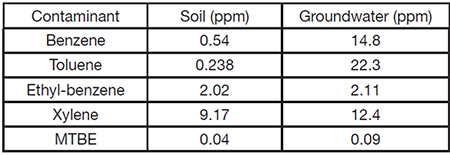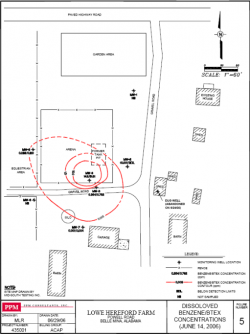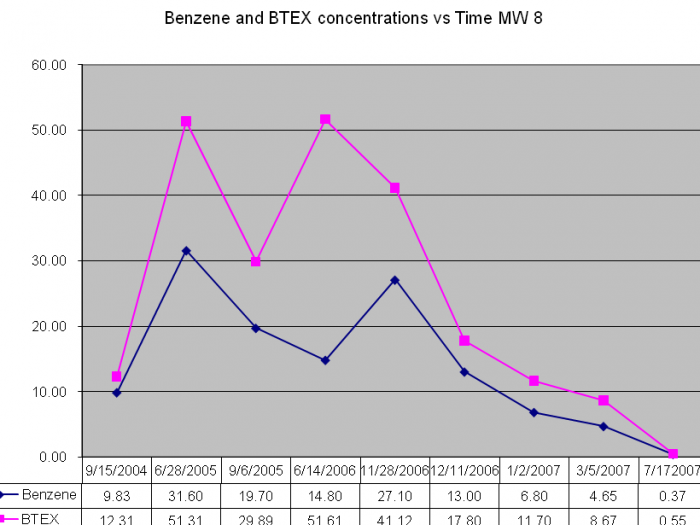Lowe Farms – Limestone County, AL
In-Situ Chemical Oxidation by way of Ozone from H2O Engineering Solves Water Quality Issues on in Limestone County, AL
Project Snapshot
Existing Conditions:

Sparging began in December of 2006. Results from monitoring indicated that BTEX levels dramatically decreased from the time that the system was installed. Results from monitoring well 8 are graphed showing the fluctuating background concentrations pre ozone and the decreasing trends from throughout the injection period. The site closed in 2008.
H2O Solution:
H2O Engineering was contracted to build a system capable of injecting concentrated ozone gas focussed on treating BTEX and Benzene. H2O Engineering recommended the use of an OSU20-52 cabinet with 10 in-situ oxidation points, each estimated at achieving a 10 foot radius of influence. The site was closed in a year and a half after mobiliziation.
Challenge:
One gasoline and two diesel USTs were removed from the Lowe Farm site in July 1995, which is located in Limestone County, Alabama. The Alabama Department of Environmental Management (ADEM) required that investigative and corrective actions be implemented at the site.
PPM Consultants Inc.’s (PPM) services were requested to construct a corrective action plan for the site by the property owner.In general, the native lithology is such that the upper 25 feet of soil consists of moist, reddish brown clay and silty or sandy clay. Chert fragments were present in most of the borings at various depths. Primary contaminants of concern are petroleum hydrocarbon and BTEX residual in both the soil and groundwater.
H2O Engineering Inc. was selected as the remediation contractor for this site. After initial site condition research was conducted and a system sizing questionnaire was filled out, H2O recommended the use of an OSU20-52 cabinet with 10 in-situ oxidation points, each estimated at achieving a 10 foot radius of influence. The site layout shows the locations of each of the sparge wells.
Results:
Sparging began in December of 2006. Results from monitoring indicated that BTEX levels dramatically decreased from the time that the system was installed. Results from monitoring well 8 are graphed showing the fluctuating background concentrations pre ozone and the decreasing trends from throughout the injection period. The site closed in 2008.



